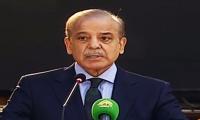There is little unexpected in the decision of the State Bank of Pakistan (SBP) to keep the policy rate unchanged at 5.75 percent for the next two months. The policy rate has now remained stable for the last 16 months, which suggests that either the SBP is happy with the overall economic forecast for the country or the bank is more comfortable keeping the status quo. Overtly, the SBP statement makes it clear why there is little rationale for any change. It predicts that the economy will grow at around six percent this year while inflation will remain below six percent. The SBP is upbeat about growth in the industrial and agricultural sectors. CPEC-related spending is likely to increase development spending and reduce the cost of borrowing. Similarly, the SBP predicts that it expects security conditions in the country to improve providing another boost to the manufacturing sector. The logic being that there is no need to change anything about the economic direction the country is taking. But is this truly the case?
There is enough to be worried about that is masked by these overwhelming positive signals. The growing foreign exchange deficit and declining exports is only the tip of the iceberg. The power crisis remains severe and any predictions that the security climate will change cannot be trusted. Borrowing from banks remains at one of the lowest levels seen, which is taken to be the real indicator of the investment climate in the country. Credit is available but there are few takers. The growth itself poses it own challenges if all goes according to plan. Government development spending remains dependent on high levels of borrowing from local and international lenders. This is rarely a strategy that works for the medium-term future of an economy with a tax-ratio as low as Pakistan. Foreign direct investment in the country stands at a low $456 million in the last two months – which continues to raise some eyebrows about when the predicted CPEC-relating spending the country will show up in the economic figures. In fact, the only real prediction the SBP has made about CPEC is that it is likely to increase imports of machinery due to ongoing investments. Another major fear is a possible decline in workers’ remittances, which are one of the major inflows that Pakistan relies upon to steady its current account deficit. Sluggish Middle Eastern economies have put a serious dent on the reliability of a factor that should never have been central to Pakistan’s economic stability in the first place. The SBP’s optimism must be steadied with a dose of grimmer economic realities.
A moment when China's Long March-5 rocket, carrying iCube Qamar, was launched in space on May 3, 2024, in this still...
COAS General Asim Munir addressing cadets during the Pakistan Air Force’s passing out parade at the Asghar Khan...
Latter is arguably an unfortunate consequence of the new-found freedom that social media gives anyone with internet...
Representational image of a tax return form. — APP FileThe FBR's decision to block the mobile SIMs of individuals...
This year, too, torrential rains indicate that the country should brace itself for extreme weather patterns
Hearing the suo-motu case regarding the allegations levelled by senior judges of the Islamabad High Court against spy...







